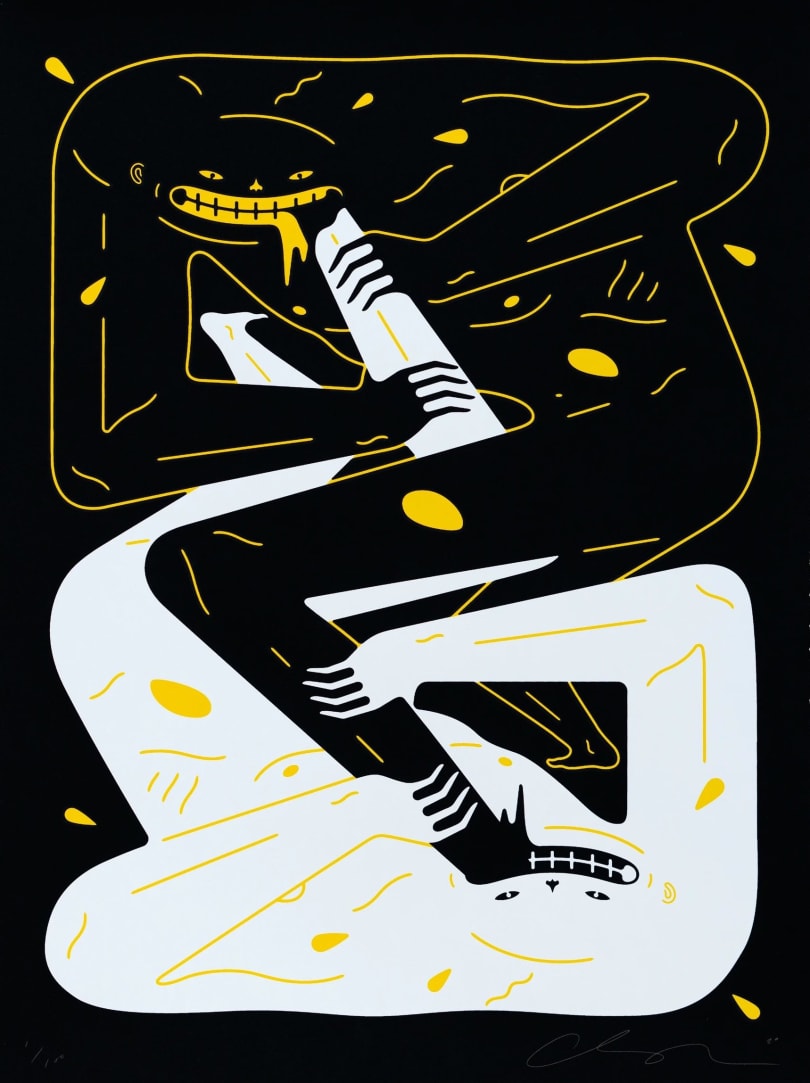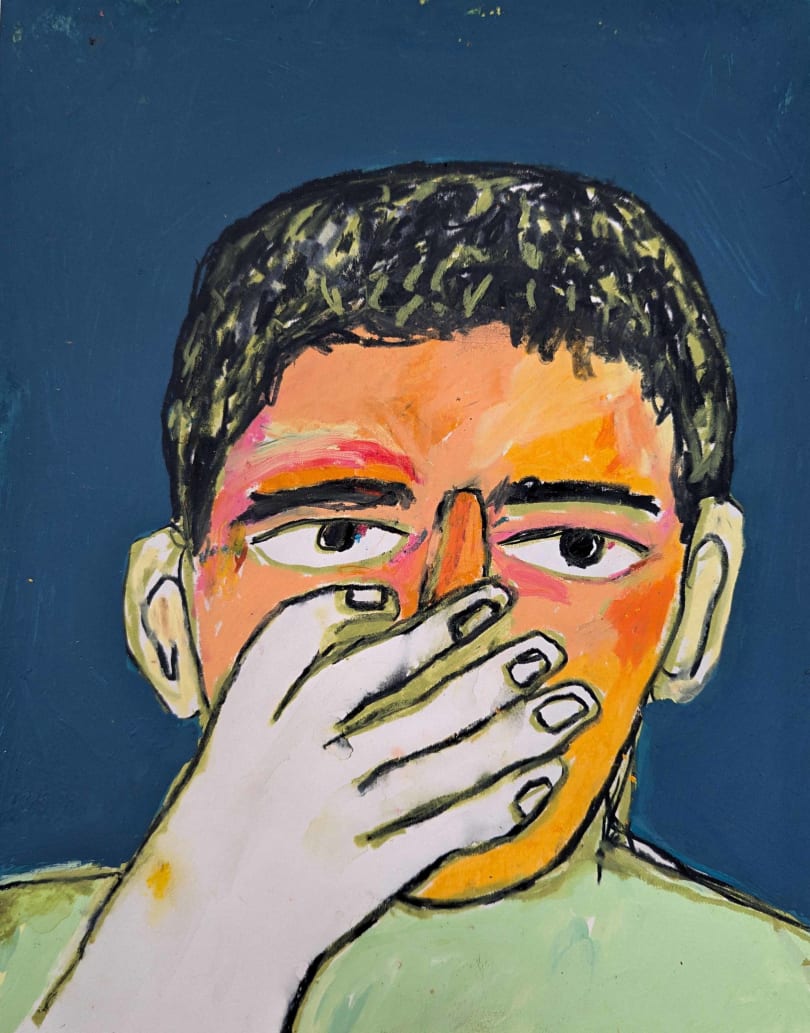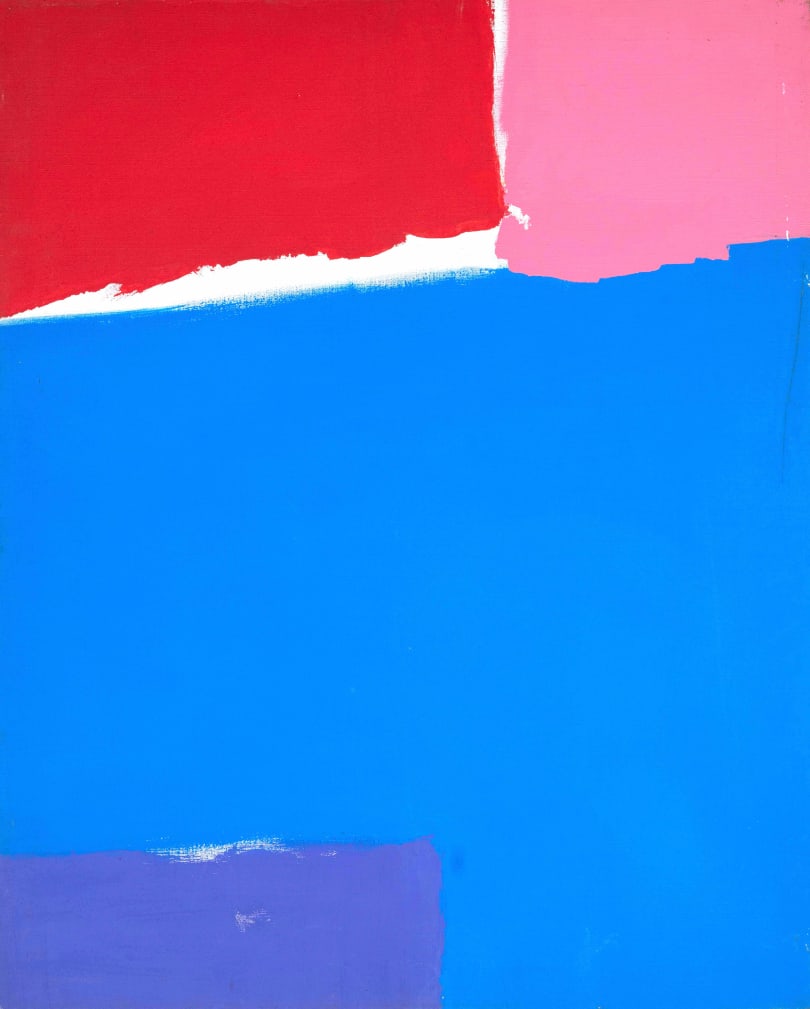
Artwork information
Category
PrintTechnique
Etching and aquatint in colours on wove paperDate
1976 - 1977Dimensions
52.5 cm x 45.4 cmDimensions with frame63.1 cm x 55.1 cm
Signature
Signed lower rightState of conservation
Very goodFraming
YesLocation
Paris, FranceDescription
'Serenade, from: The Blue Guitar' by David Hockney (1976-1977)
In the summer of 1976, David Hockney discovered a poem by Wallace Stevens, 'The Man with the Blue Guitar', inspired by Picasso's famous Blue Period painting. He immediately had the idea of returning the poem to its original state as a painting, in order to consecrate the omnipotence of image over language.
In the poem," recalls Hockney, "I like the phrase 'you don't play things as they are', because Picasso's detractors used to say of his art: 'you don't paint things as they are'. In reality, things as they are do not exist in the realm of painting, where the eye is deceived by the use of illusionist processes to make things look as they are. Hockney thus claims to be the heir to one of the great revolutions of modern painting: the break with figurative illusionism, which stood in the way of the artist's autonomy and the total liberation of his creative faculties.
Serenade symbolizes this new awareness. A celebration of the joy of spontaneously inventing images without concern for logic, the work presents a variety of forms that the artist proudly arranges like trophies on a display stand. Hockney also off-centers the gaze by directing each vanishing line to a different point in space outside the work, directly into life.
The artist says he envisaged this work as a playful dialogue between abstract line and the illusion that freezes the flow of water in space, the mathematical complexity of man-made objects and the organic simplicity of natural forms.
The work can be read as a self-portrait of the artist as a reservoir of image production. Finally, it poses the question: how can we look at the world and recreate it without being prisoners of old modes of representation?
Since the early 1960s, David Hockney has sought to combine his modern aesthetic style with personal subjects. He began by inserting fragments of poems into his creations, as in 'We Two Boys Together Clinging' (1961), which incorporates two lines from a Walt Whitman poem of the same title.
Fifteen years later, inspired by Wallace Stevens' 'The Man with the Blue Guitar' (1937), with its themes of representation and imaginative transformation, David Hockney produced ten drawings in colored ink and colored pencil. With the help of master printer Aldo Crommelynck, these drawings were converted into 20 etchings using a color etching process originally developed for Pablo Picasso.
While not a literal illustration of Stevens's poem, 'The Blue Guitar' series of prints interprets its themes in visual terms, and most of the works testify to Hockney's love of Picasso.
Etching and aquatint in color on wove paper, signed in pencil, numbered 156/200 (there were also 37 studio proofs). Published by Petersburg Press in New York and London in 1977, with the title stamped on the verso.
Dimensions of plate: 437 x 347 mm - Dimensions of sheet: 525 x 454 mm - Dimensions of framed work: 631 x 551 mm
Condition report:
- The sheet is in very good condition, it is complete, the colors are very beautiful.
- The sheet shows slight mounting stains, and is bound with tape at the corners of the sheet on the reverse.
- There is also a small freckle near the top edge of the sheet on the reverse, which is not visible on the front.
- The frame is in fairly good condition, except that the glass is scratched.
Provenance
Marlborough Gallery, New York
Bibliography
Scottish Arts Council 217; Tokyo 196
Exhibition(s)
This is a non-exhaustive list of the museums that own a copy of this work:
- MoMA, New York, USA
- Art Institute, Chicago, USA
- McNay Art Museum, San Antonio, USA
Imagine the artwork at home














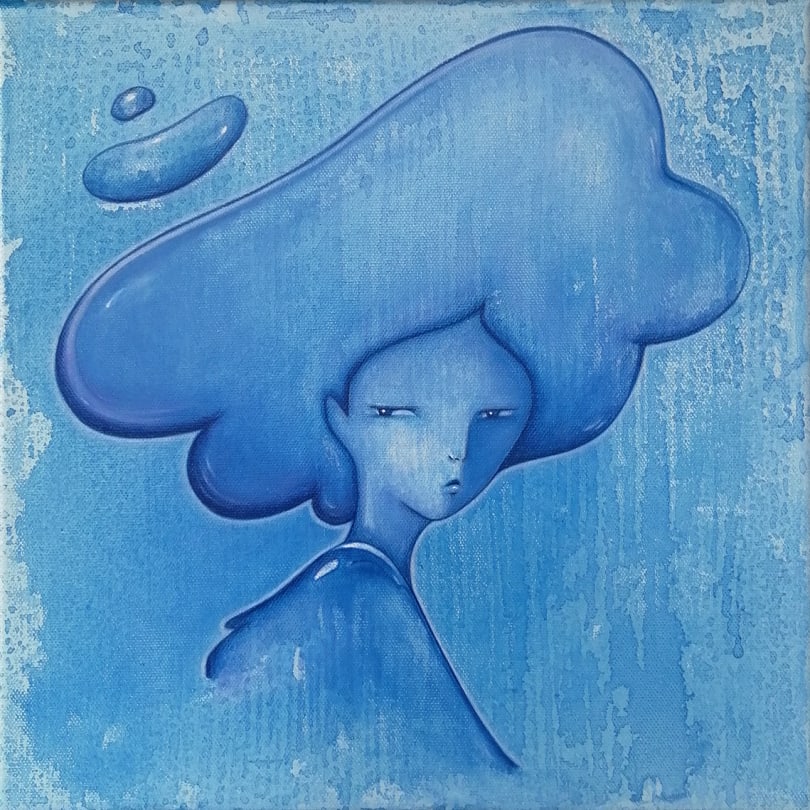



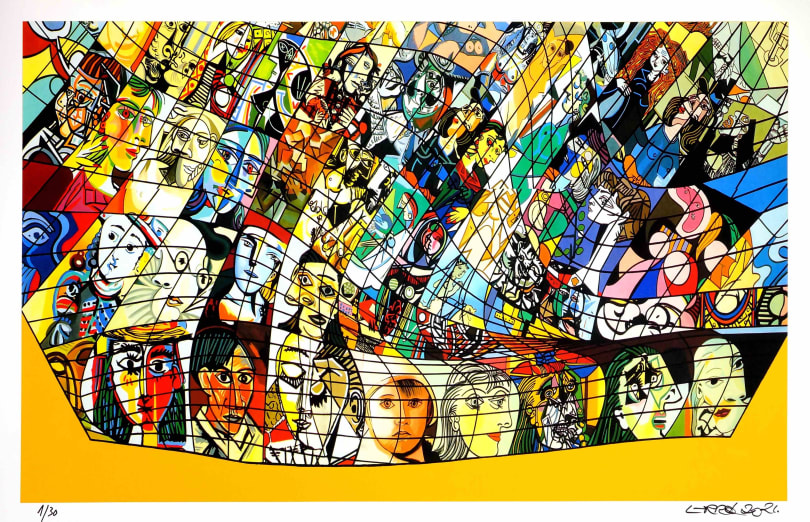
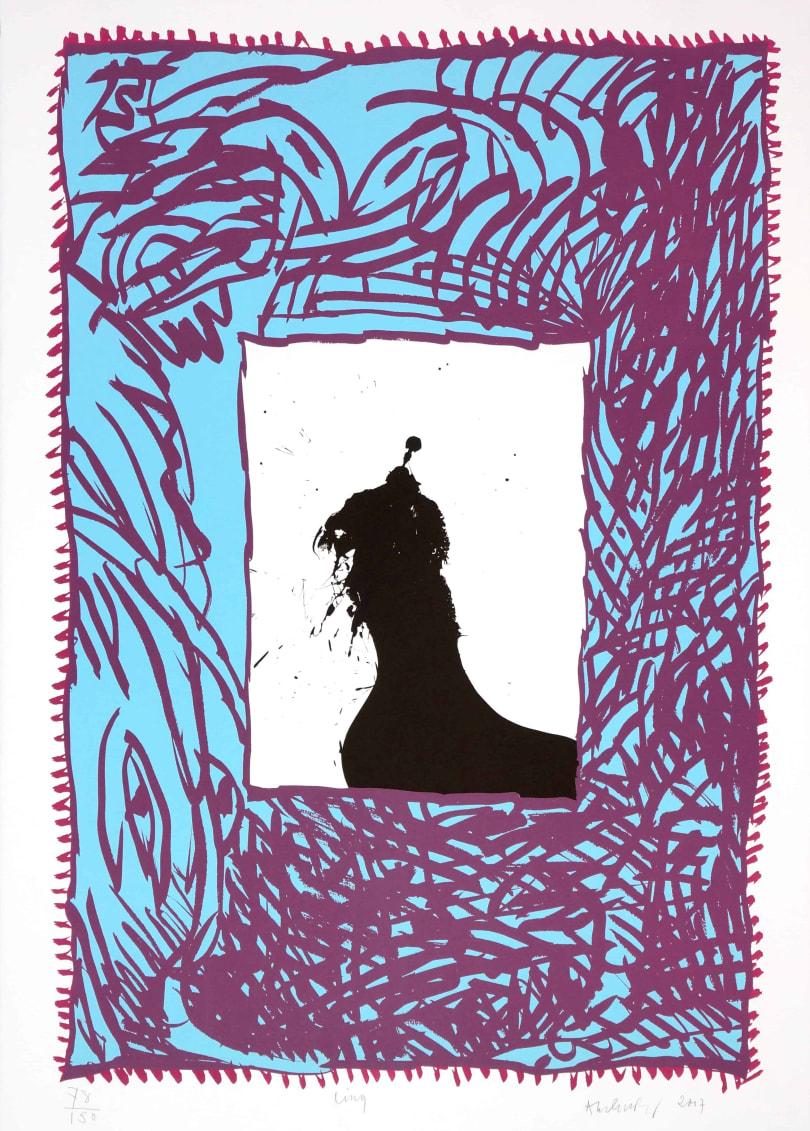











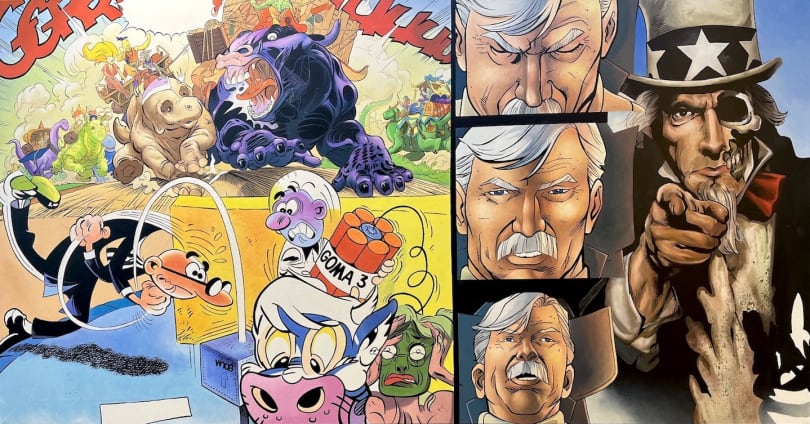


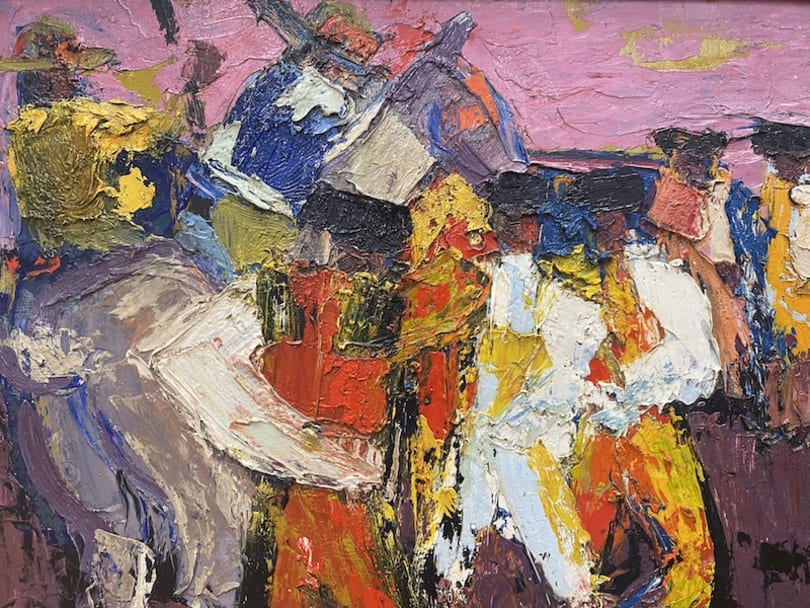
.jpg)


.jpg)





